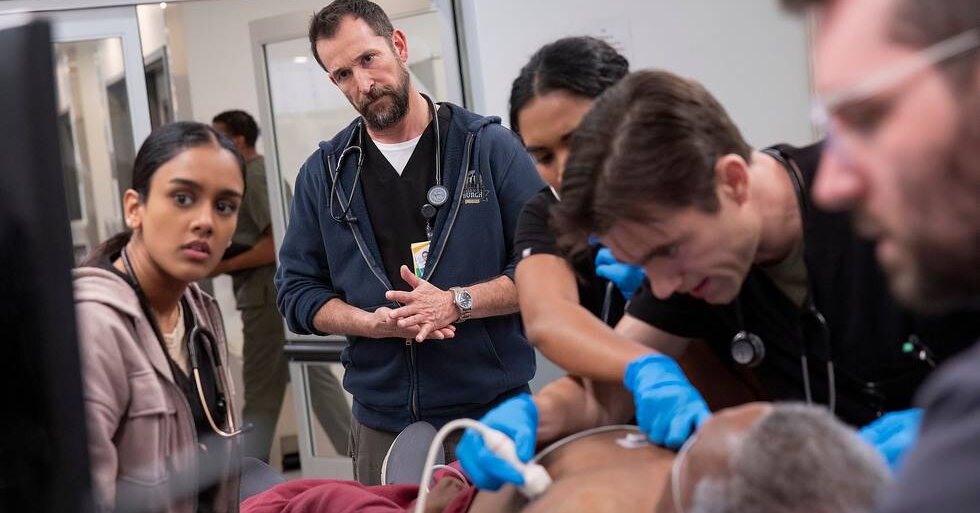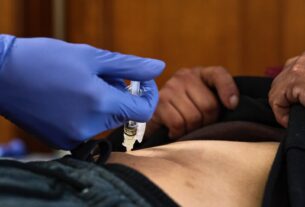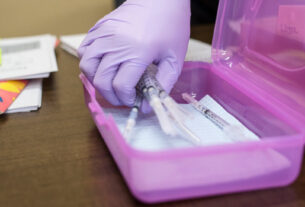Doctors and nurses who love Max’s “The Pitt” remember the moment they realized it wasn’t like other medical shows.
Caitlin Dwyer, a charge nurse in Milwaukee, took note of a character’s decision — counterintuitive but medically correct — not to defibrillate a patient with no pulse.
Dr. Elizabeth Rempfer, an attending physician in Maryland, felt a pang of recognition at the depiction of a chaotic and desperate waiting room.
For Dr. Tricia Pendergrast, a resident physician in Ann Arbor, Mich., it was a character who faced such an unrelenting caseload that even a trip to the bathroom was cut short.
“It’s the first time that I’ve watched doctors on television that I felt like I could see myself in them,” she said.
Most medical professionals learned long ago not to expect reality in dramatizations of their work. From the early days of “General Hospital,” to “Grey’s Anatomy” and its various spinoffs, to more recent hits like “The Good Doctor” and “Brilliant Minds,” TV medical dramas have tended to go heavy on the drama, light on the medicine.
But “The Pitt,” starring the “ER” veteran Noah Wyle as the senior physician at a fictional trauma center in Pittsburgh, has broken away from the pack in part because of its unusual accuracy. Since it premiered last month (new episodes arrive on Thursdays), the show has amassed an ardent following of real-life emergency room doctors, many of whom have expressed a mix of surprise and gratitude on platforms like TikTok, LinkedIn and Reddit.
“I was waiting for them to screw up like other medical shows I’ve watched,” Dr. Graham Walker, an attending physician in San Francisco, said in an interview. “But I got through a whole episode and they never really did.”
“The Pitt” was created by R. Scott Gemmill, a former writer on “ER” and “NCIS: Los Angeles,” and is executive produced by John Wells (“ER,” “The West Wing,” “Third Watch”), who also directed the pilot episode and the season finale. It follows Michael Robinavitch (Wyle), known as “Dr. Robby,” as he leads a dedicated staff of doctors and nurses through an exceptionally busy but generally plausible shift in a modern emergency room.
In a model reminiscent of the counterterrorism thriller “24,” each episode tracks one hour of the shift, chronicling the staff’s efforts to manage a wide variety of cases while under pressure from administrators to improve performance metrics. (Last August, the estate of Michael Crichton, the novelist and screenwriter who created “ER,” in 1994, sued Warner Bros. Television, Gemmill, Wells and Wyle for breach of contract, arguing that “The Pitt” is an unauthorized “ER” reboot in disguise. The case is ongoing.)
In an interview, Gemmill and Wells said the aim was to create as authentic a portrayal as possible. Recent changes to the real-world culture surrounding medicine — the decline of primary care, the enduring trauma of the pandemic, the creeping privatization of hospitals — lent themselves to a different, more grounded conception of drama. And the fact that the show is on Max, which permits a degree of graphic language and imagery that is not possible on a broadcast network, encouraged a more gloves-off approach to the writing.
“We wanted to differentiate by not cutting corners on the medicine,” Gemmill said, sitting next to Wells during a video call from Los Angeles. “The drama is always going to be there in the reality of a place like the emergency department.”
Wells noted that the realism of the storytelling also helped make the characters more relatable.
“These are not people who are living a glamorous life and driving a fancy car,” he said. “These are people who are doing a public service and dedicating themselves to helping people who are really in need.”
The creators employed doctors at every level of the production.
The medical cases are scripted by the writer and producer Joe Sachs, another “ER” alumnus, who was an emergency room doctor before he began producing television shows. A team of medical consultants — most of whom actively practice — then write detailed notes and choreography explaining what treatment should be administered and how. On the set, the consultants coach the lead actors through their performance and line delivery. And several of the background actors who appear onscreen are actually nurses in real life.
“There’s a lot of prep work involved, much more than I even expected,” said Dr. Elizabeth Ferreira, an emergency room doctor in Los Angeles who works as a consultant on the show. “What supplies are needed? What prosthetics need to be made? Is there nudity? What should be on the screens of the monitors? There are so many nuances that go into bringing the cases to fruition.”
Whereas some doctors have a hard time watching other medical shows because of flagrant inaccuracies (incorrect terminology, nonsensical vital signs, inexplicably clean scrubs), “The Pitt” occasionally poses the opposite problem — some sequences are so realistic that they can trigger emotional flashbacks.
Several medical professionals said they were overwhelmed by a fleeting depiction of Wyle’s character wearing a full-body respirator suit at the height of the pandemic. Other scenes, including one in which Dr. Robby and the adult children of an older patient watch him take his last breaths; and another, in which a mother’s wail pierces the din of the hospital floor, also hit close to home.
“There are moments when I literally feel like I’m watching a shift at work,” said Rempfer, the physician from Maryland, who works in an emergency room. “Sometimes I have to turn it off and put on ‘Lost,’ or something else completely different.”
For all of its efforts at authenticity, not everything on the show is true to life, of course. It is still television. Doctors said that even a large hospital in a major city would be unlikely to face such a high volume of complex traumas in a single shift. And some of the cases and interventions depicted would take far longer to resolve in reality.
A frequent criticism concerned the portrayal of chest compressions, which, in real life, look much more violent than they do on “The Pitt.”
“No one ever gets those right,” Pendergrast said.
But the most common reaction was one of gratitude. For many, watching all that the characters endure on the show soothed an ache they didn’t even know they had.
“Like a lot of doctors, I’ve been through all of these scenarios myself, but I’ve never really stopped to think, ‘What the hell did I just experience?’” said Walker, from San Francisco, who works in an emergency room. “Hopefully, this show can help us all to be a little kinder to ourselves.”





